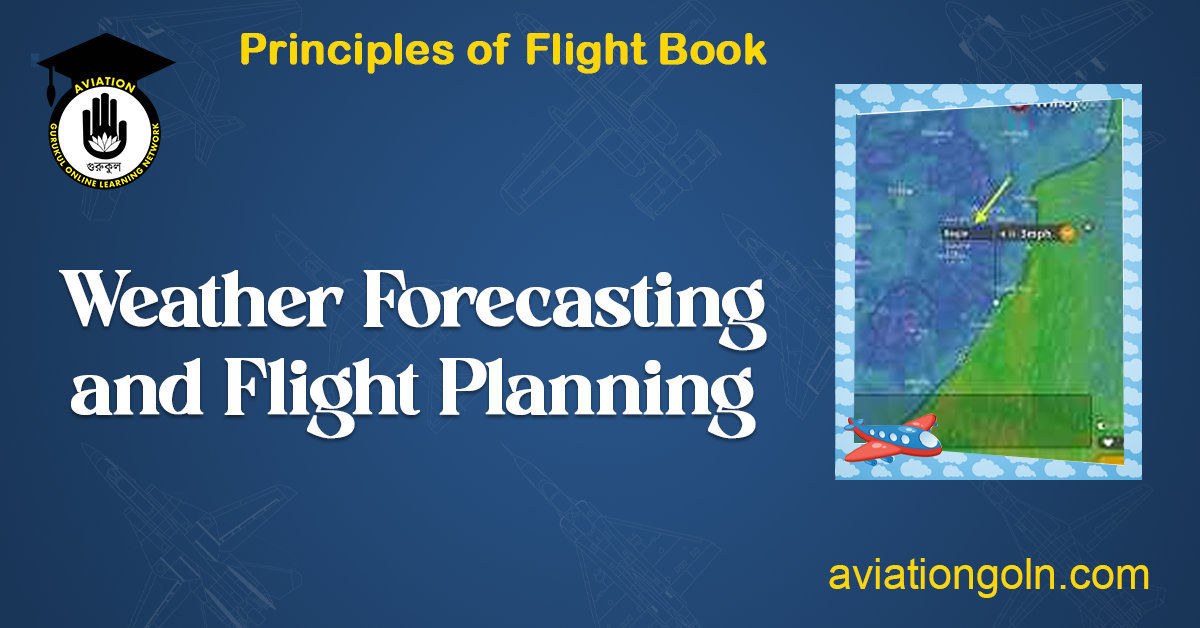Every time an aircraft takes to the skies, it faces the vast dynamics of the Earth’s atmosphere. The weather, with its vast complexity and unpredictability, presents one of the most significant challenges to aviation. Flight planning, a fundamental aspect of ensuring the safety and efficiency of a journey, relies heavily on accurate weather forecasting. The relationship between weather forecasting and flight planning is so crucial that it could be described as symbiotic – one without the other can lead to catastrophic outcomes.
Weather Forecasting and Flight Planning

In this comprehensive discussion, we will explore the intricate dance between weather forecasting and flight planning, revealing why weather matters so profoundly in the realm of aviation and how the aviation industry leverages meteorological insights to ensure safe and efficient flights.
1. A Historical Glance: Weather and Flight
The Wright Brothers’ first flight in 1903 was the beginning of an era, but even those initial, tentative forays into the air encountered weather phenomena. As aviation evolved, so did the understanding and the importance of weather forecasting. Before sophisticated meteorological tools and forecasting models, pilots relied on visible signs and ground observations for weather indications.
Early pilots, lacking the advanced navigation and communication equipment we take for granted today, would often land or change course at the first sign of adverse weather. Many early aviation accidents were attributed to pilots being caught off guard by unforeseen weather phenomena.
2. The Fundamentals of Weather Forecasting
Weather forecasting involves predicting the atmospheric conditions at a particular location for a specific period. Forecasting relies on:
- Observations: Using weather stations, satellites, radars, and balloons.
- Models: Mathematical models that simulate the Earth’s atmosphere, oceans, and land.
- Expert Interpretation: Meteorologists interpreting data and models to predict localized conditions.
3. Why Weather Matters in Aviation
There are myriad ways weather impacts flights:
- Turbulence: Caused by various factors, including temperature differences, jet streams, and frontal boundaries. Turbulence can range from mild discomfort to severe, potentially causing injury.
- Thunderstorms: Present multiple threats, from turbulence to lightning, hail, and wind shears.
- Icing: When supercooled water droplets freeze on contact, adding weight to an aircraft and altering the aerodynamics.
- Visibility: Fog, rain, or snow can severely reduce visibility, making takeoffs, landings, and navigating challenging.
- Wind: Strong crosswinds or rapidly changing wind directions can make landings treacherous.
4. The Process of Flight Planning
Given the many ways weather can impact flights, effective flight planning is imperative. This process includes:
- Route Planning: Determining the most efficient and safe route, considering current and forecasted weather conditions.
- Fuel Calculations: Weather conditions, particularly headwinds or storms requiring detours, can increase fuel consumption.
- Alternate Airports: In case of unforeseen issues at the destination, nearby airports are chosen as alternates, considering weather predictions.
5. Weather Forecasting in Flight Planning
Weather information sources relevant to flight planning:
- METARs: Aviation routine weather reports, providing hourly observations of temperature, dew point, wind, visibility, and more.
- TAFs: Terminal Aerodrome Forecasts, predicting conditions expected at airports.
- SIGMETs and AIRMETs: Warnings about significant meteorological conditions detrimental to the safety of aircraft.
- Weather Radars: Used in real-time, particularly to avoid thunderstorms.
- Satellite Images: Provide cloud cover and movement data, invaluable for predicting storm paths and intensities.
Pilots and airline dispatchers consult these sources to craft flight plans tailored to the predicted weather conditions.
6. Advances in Weather Forecasting for Aviation
Technological advancements have revolutionized weather forecasting:
- Numerical Weather Prediction (NWP): Uses mathematical models to predict how current conditions will evolve.
- Geostationary Satellites: Offer real-time images of cloud patterns and movements.
- Weather Radars: Now with dual-polarization capability, providing enhanced precipitation data.
- Probabilistic Forecasting: Instead of giving absolute predictions, this offers a range of possible outcomes, helping planners assess risks more effectively.
7. Challenges and Future Directions
While forecasting has become significantly more accurate, challenges remain:
- Microscale Phenomena: Events like microbursts or sudden fog formation can still be tough to predict.
- Long-term Predictions: Forecasts beyond a week can still hold uncertainties.
- Integration of Data: As more data sources become available, integrating them seamlessly into actionable insights for pilots and planners remains an ongoing challenge.
Future directions include:
- Artificial Intelligence: Machine learning can further refine forecast accuracy, learning from vast data sets to spot patterns beyond human detection.
- Crowdsourced Data: Modern aircraft are equipped with sensors. Aggregating this data from flights worldwide can offer real-time insights and refine predictions.
- Climate Change: As global weather patterns change, understanding and predicting their impact on aviation will be crucial.
Conclusion
The interplay between weather forecasting and flight planning is a testament to humanity’s quest to navigate the complexities of our environment. As aviation continues to play an integral role in global connectivity, ensuring flights remain safe and efficient amidst the dynamic tapestry of the Earth’s atmosphere is paramount. With advancements in technology, we inch closer to mastering the skies, but the dance between weather and flight will forever remain an intricate ballet, demanding respect, understanding, and constant adaptation.
See more:
